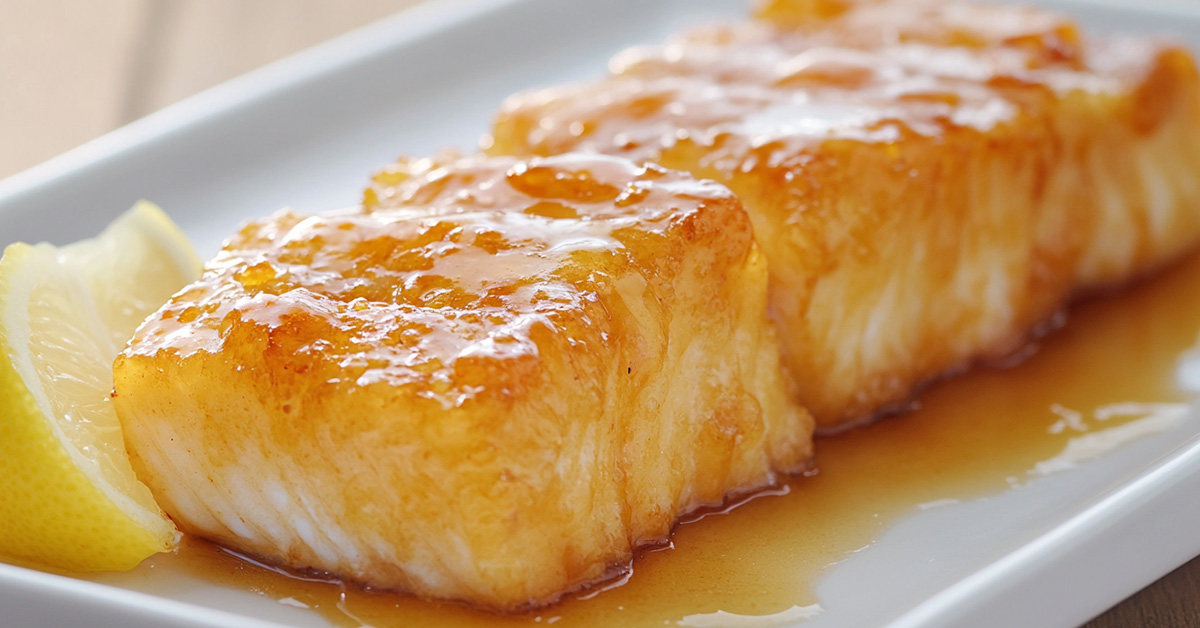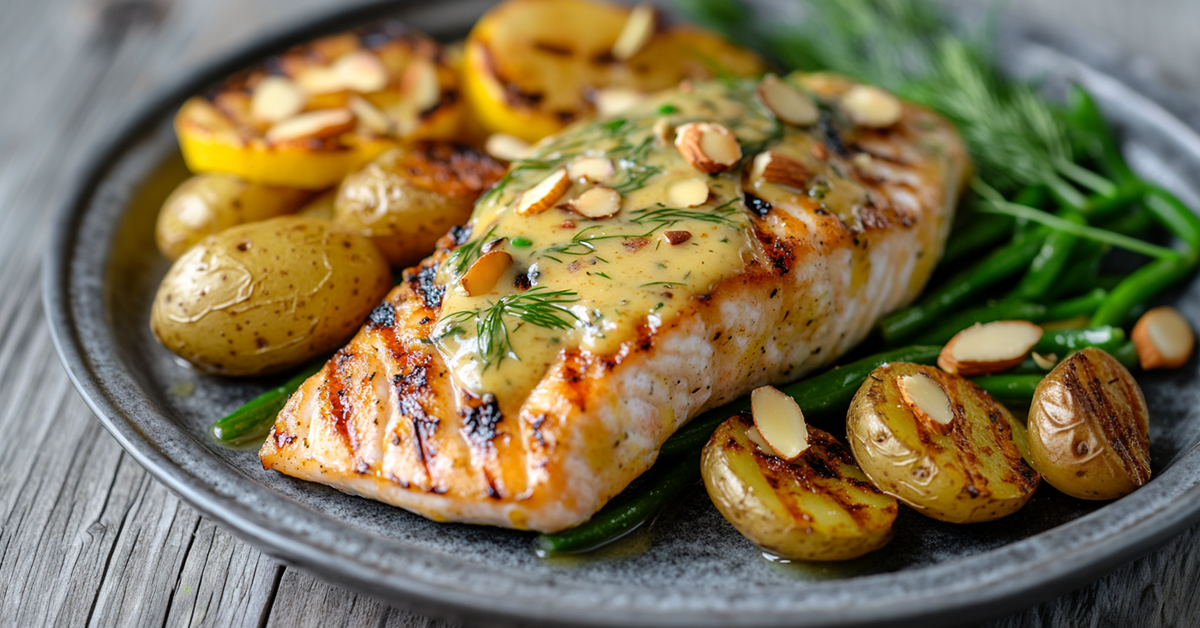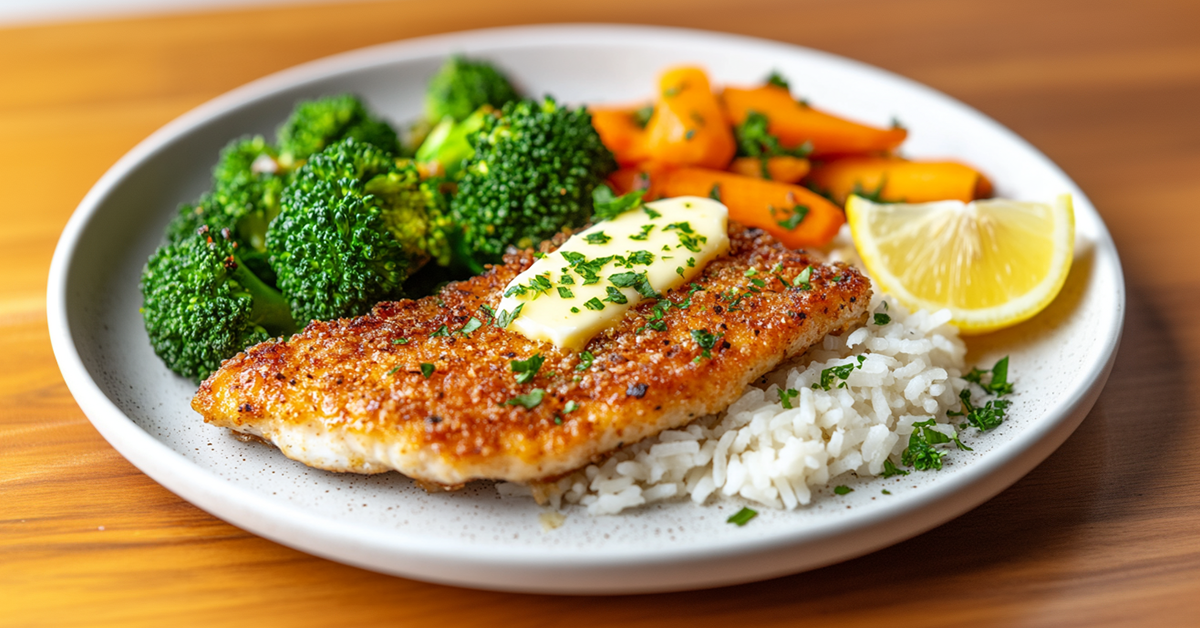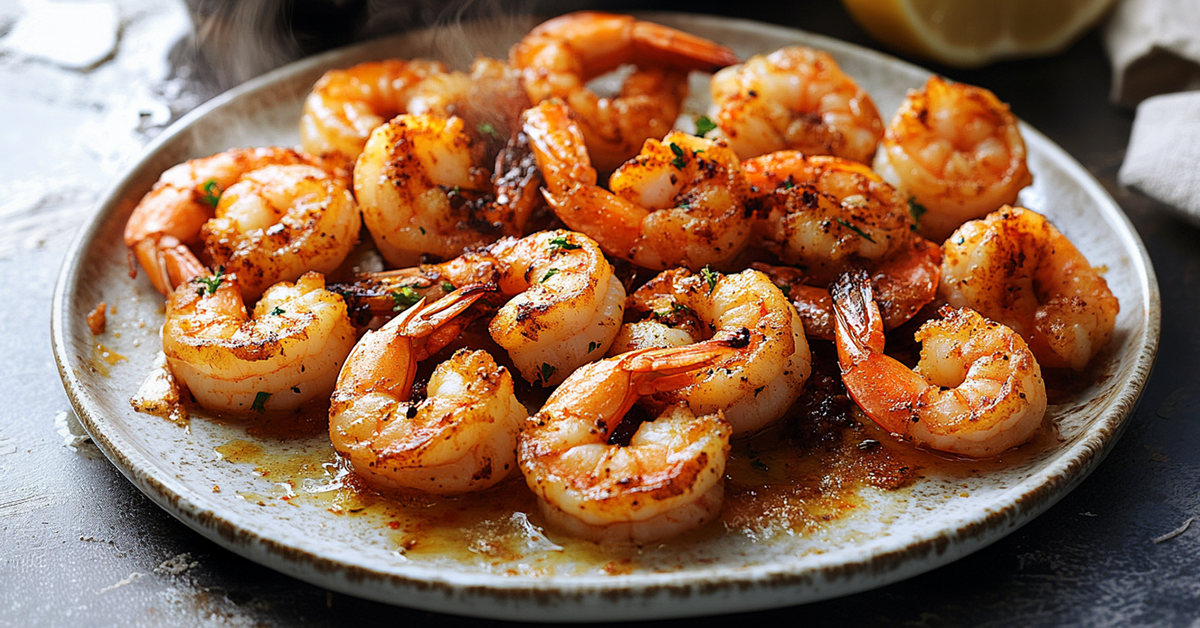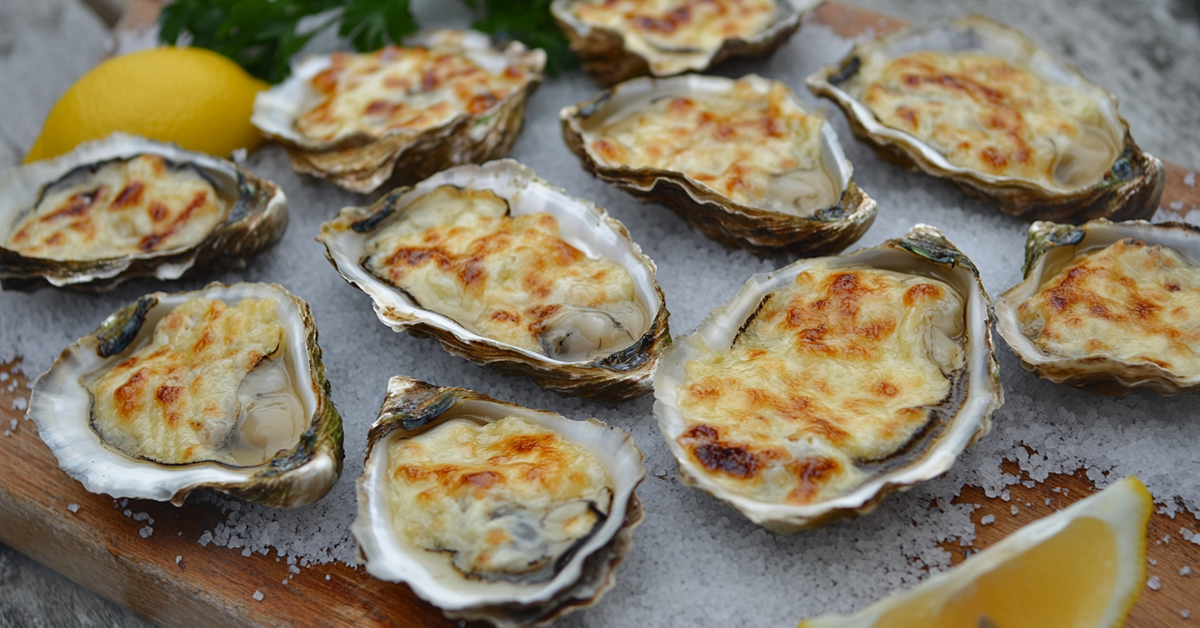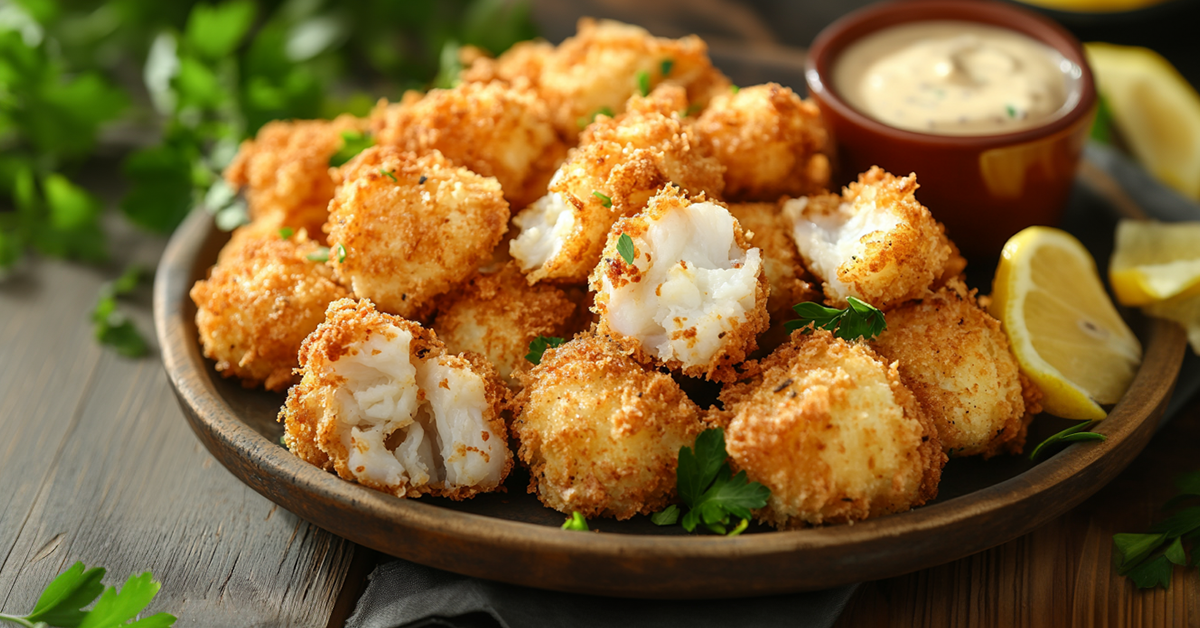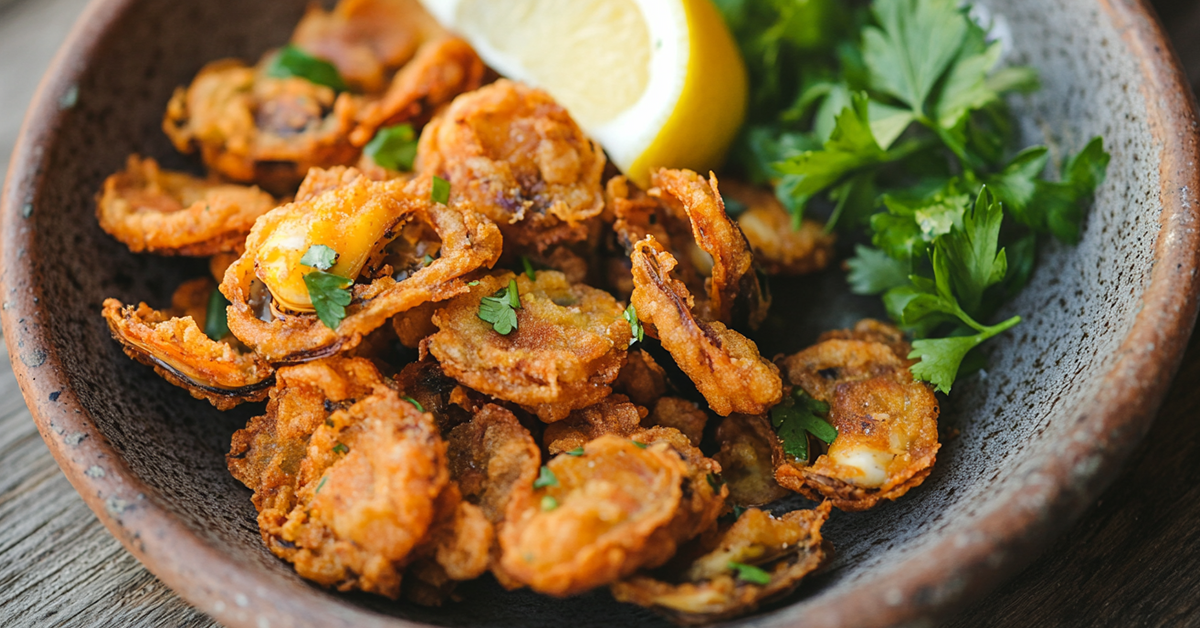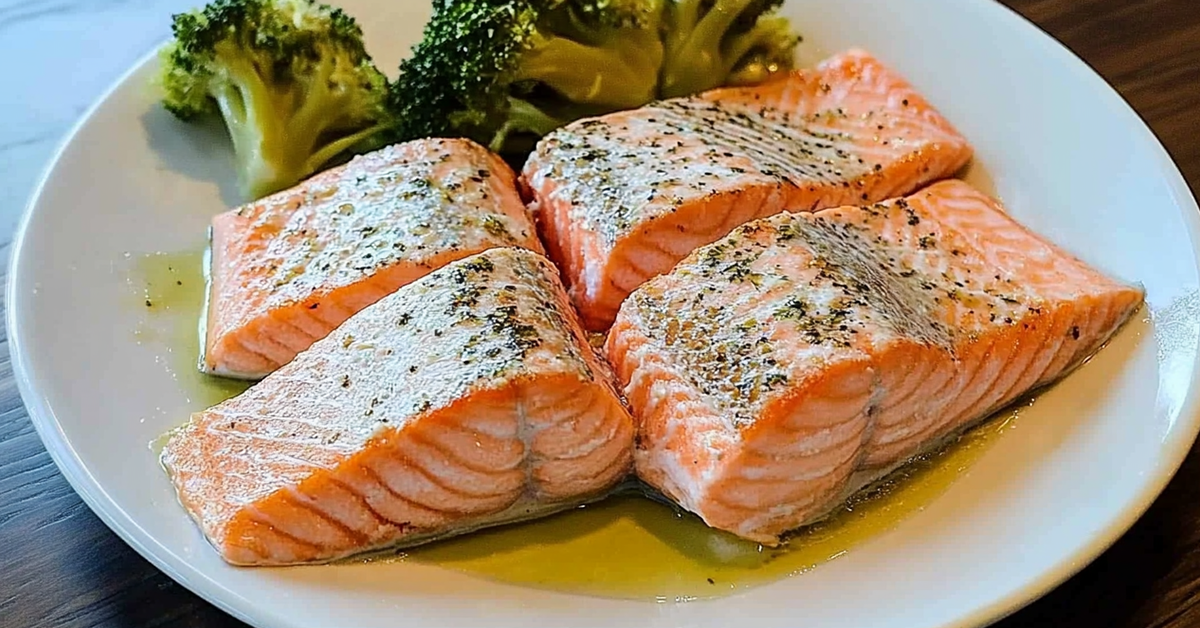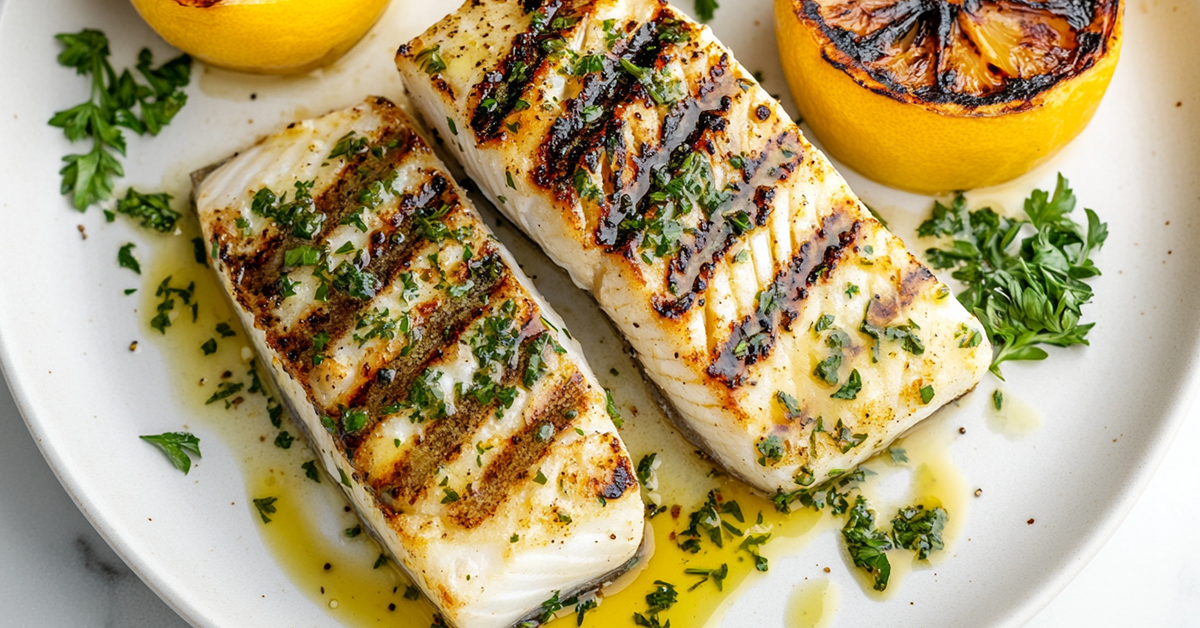Chilean sea bass can cost up to $50 per pound in high-end restaurants. Surprising, isn’t it? 🤔
The good news? Your kitchen can become the source of restaurant-quality Chilean sea bass at a much lower cost. Your air fryer holds the key to success. This amazing appliance creates that perfect, flaky texture while preserving the fish’s natural oils and flavors.
Your search for reliable Chilean sea bass recipes ends here. The process of cooking Chilean sea bass in an air fryer is straightforward, regardless of your cooking experience. Both seasoned chefs and first-time cooks can achieve excellent results.
Let’s tuck into the essential steps that will help you prepare the perfect air-fried Chilean sea bass!
Table of Contents
Understanding Chilean Sea Bass: More Than Just a Fish
Chilean sea bass represents one of the most remarkable rebranding stories in culinary history. The fish we know as Chilean sea bass started life with a less appealing name – the Patagonian toothfish. Lee Lantz, an American fish wholesaler, changed this name in 1977 to make it more marketable.
This prized fish isn’t a bass at all, nor is it exclusively Chilean. The remarkable creature lives in the southern ocean waters near Antarctica. It can live up to 50 years and grow impressively large – over 6 feet in length and weighing more than 200 pounds.
The sort of thing I love about this fish is its unique characteristics:
- Rich, buttery flesh that becomes oil-rich in frigid Antarctic waters.
- Hard-to-overcook texture making it forgiving for home chefs.
- Versatile preparation options from grilling to baking.
- Deep-water habitat (1,000 to 11,000 feet).
Eating Chilean sea bass comes with responsibility. The fish grows slowly and takes at least 10 years to reach sexual maturity. 16,000 tons were legally harvested in Antarctic waters in 2000, but estimates suggest poachers may have taken twice that amount. [Reference]
You can make better choices about Chilean sea bass consumption now. The Marine Stewardship Council (MSC) certification is a vital indicator of eco-friendly fishing. MSC-certified Chilean sea bass comes from fisheries that maintain healthy fish populations and minimize their effect on marine ecosystems.
This fish’s evolution from an obscure deep-water species to a culinary sensation shows how rebranding can revolutionize a market. The name change from “bacalao de profundidad” (cod of the deep) to Chilean sea bass has made it one of the world’s most coveted fish. Yes, it is amazing how a simple name change can transform a food’s destiny.
Read also: Swordfish in Air Fryer Recipe
Choosing the Perfect Chilean Sea Bass
Finding the perfect Chilean sea bass requires knowledge of what to look for at your local fish market or grocery store. This premium fish costs around $25-30 per pound, but its exceptional quality makes it worth the investment.
Quality Chilean sea bass displays these characteristics:
- A clean, ocean-fresh aroma (never “fishy”).
- White, firm flesh with skin firmly attached.
- Moist texture without being flakey or cracky.
- Consistent coloring throughout the fillet.
You should know that approximately 70% of what retailers label as “fresh” Chilean sea bass has been flash-frozen and thawed. This fact shouldn’t worry you too much. The most important thing is knowing how to handle each type properly.
Fresh Chilean sea bass should be cooked within a few days of purchase. Look for fillets with the Marine Stewardship Council (MSC) certification label to ensure environmentally responsible fishing practices.
Storage and Handling Tips: Timing is significant when storing Chilean sea bass. Freezing offers the best option if you can’t prepare it within a day or two. High-quality freezer bags will protect your fish, and you should use it within a month of freezing.
Thawing Guidelines: Proper thawing will maintain the quality of frozen Chilean sea bass. The refrigerator provides the best environment for overnight thawing rather than room temperature. You can place the sealed fish under cold running water to thaw quickly, but never refreeze previously frozen fillets.
Fish has a delicate cellular structure. Cook thawed fish promptly since it spoils faster than fresh fish that’s never been frozen. This becomes especially important when you have invested in premium Chilean sea bass.
A reliable fishmonger becomes your greatest asset in securing high-quality Chilean sea bass. Feel free to ask about the source and handling of the fish – reputable sellers should readily provide documentation about their sourcing practices.
Why Air Fryer Cooking is Ideal for Chilean Sea Bass
Your kitchen can become a gourmet restaurant when you cook Chilean sea bass in an air fryer. This modern appliance has reshaped the scene of home cooking. You can now create restaurant-quality dishes right in your kitchen.
The air fryer works great with Chilean sea bass. It cooks the fish in under 15 minutes and gives you an incredibly moist, tender, and flaky texture. The rapid air circulation will give a perfectly crispy exterior while you retain control of its buttery-soft interior.
Your air fryer and Chilean sea bass are a perfect match because:
- You get restaurant-quality results without excessive oil.
- The heat distributes evenly for consistent cooking.
- Cleanup is quick with minimal prep time.
- The fish’s natural, buttery flavor stays intact.
- You have precise temperature control for perfect doneness.
Precision is what makes air fryer cooking special. Your Chilean sea bass will reach the ideal internal temperature of 145°F (63°C) without much effort. The process is simple – just preheat your air fryer to 400°F and you’ll have perfectly cooked fish in 8-10 minutes.
Pro Tips for Perfect Results: All but one of these portions should have space in your air fryer basket to avoid uneven cooking. Pat your fish dry before cooking and add a light coat of olive oil. This simple step brings out natural flavors and creates that perfect golden exterior.
This method stands out because it’s healthy. You need very little oil to get that crispy texture. The fish keeps its essential omega-3 fatty acids and natural nutrients. Health-conscious home chefs will love this approach.
The convenience is remarkable. Some air fryer models don’t need preheating, which makes them perfect for busy weeknight dinners. You’ll get professional-quality results substantially faster than traditional cooking methods.
Read also: Air Fryer Mahi Mahi Recipe

Air Fryer Chilean Sea Bass
- Total Time: 32 minutes
Description
Ready to elevate your cooking game? This air fryer Chilean sea bass recipe creates a perfectly cooked fish that’s crispy outside yet maintains its signature buttery interior.
You can now enjoy restaurant-quality Chilean sea bass from your kitchen. Simple ingredients combined with precise cooking techniques create an elegant yet easy-to-prepare dish. The result gives you flaky, moist fish with a golden-brown exterior in less than 15 minutes.
Ingredients
- 1 pound Chilean sea bass (two fillets).
- 1/4 cup honey.
- 1 tablespoon soy sauce.
- 1 teaspoon red crushed pepper.
- 1 garlic clove, finely minced.
- Salt and pepper to taste.
- Cooking spray.
- Lemon wedges (optional).
Instructions
- Your sea bass should reach room temperature before cooking, which takes about 20 minutes.
- Set your air fryer to 375°F and spray the basket with cooking spray.
- Use paper towels to pat the fish fillets dry and season them well with salt and pepper.
- Set the fillets skin-side down in the air fryer basket without overcrowding.
- Let them cook for 10 minutes at 375°F.
- Mix honey, soy sauce, minced garlic, and crushed red pepper to create the glaze while the fish cooks.
- Brush the glaze on the fish after the original cooking time and raise the temperature to 400°F.
- Cook 2 more minutes until you see a crispy, golden-brown top.
Notes
Your air fryer basket shouldn’t be overcrowded – cook in batches when needed.
The fish’s internal temperature should reach 145°F.
Leftovers stay fresh in an airtight container for up to 3 days in your refrigerator.
Brush with butter and air fry at 330°F for 5-7 minutes to reheat.
- Prep Time: 20 minutes
- Cook Time: 12 minutes
- Category: Seafood
- Method: Air Frying
Health Benefits of Chilean Sea Bass
Chilean sea bass not only tastes amazing but also packs impressive health benefits that make it a great addition to your diet. A 100-gram serving gives you:
- 105 calories.
- 18 grams of protein.
- 4 grams of fat.
- 0.6 grams of omega-3 fatty acids.
- 70% of daily Vitamin B12.
- 45% of daily Selenium.
- 10% of daily Vitamin D.
Adding Chilean sea bass to your meals helps support your heart health through omega-3 fatty acids. These fats help reduce inflammation, lower blood pressure, and cut your risk of heart disease. The same omega-3s enhance your brain function and may reduce age-related cognitive decline while supporting mental well-being.
Your bone health gets a major boost from this fish’s vitamin D and selenium content. These nutrients are vital to calcium absorption and bone mineralization. The high protein content makes it a great choice to maintain muscle mass and support your body’s healing processes.
The fish’s omega-3 fatty acids help curb excessive inflammation linked to heart disease, diabetes, and autoimmune disorders. Your eye health benefits too, as these omega-3s help prevent macular degeneration and keep your eyes properly moisturized, especially as you age.
It’s worth mentioning that while Chilean sea bass is rich in nutrients, you should watch how often you eat it. The mercury content means adults should stick to two portions monthly, and children should have no more than one.
This fish’s protein density makes it great to maintain a healthy weight and boost your metabolic rate. The vitamin D content helps regulate your mood and energy levels. This becomes even more valuable during winter months with limited sunlight exposure.
Note that cooking methods like the air fryer technique mentioned earlier help preserve these nutrients while creating a tasty meal. MSC-certified Chilean sea bass prepared correctly isn’t just a gourmet dish – it’s an investment in your health.
Nutrition Breakdown of Chilean Sea Bass
Let’s take a closer look at your Chilean sea bass’s nutritional makeup to see what makes it such a nutrient powerhouse. A standard 3.5-ounce (100g) serving delivers great nutritional value while staying modest in calories. [Reference]
Here’s a complete nutritional breakdown per serving:
| Nutrient | Amount | % Daily Value |
|---|---|---|
| Calories | 270 | – |
| Total Fat | 20g | 26% |
| Protein | 16g | 32% |
| Cholesterol | 35mg | 12% |
| Sodium | 75mg | 3% |
| Vitamin D | 28.9mcg | 140% |
| Vitamin B12 | – | 120% |
| Selenium | – | 76% |
Your Chilean sea bass excels in its vitamin content, especially with these vital nutrients:
- Vitamin D: A single 6-ounce portion provides 140% of your daily needs
- Vitamin B12: Delivers 120% of your daily requirement
- Selenium: Offers 76% of your daily value
The fish’s high oil content adds more than just flavor. Each serving contains about 20 grams of fat, mostly healthy omega-3 fatty acids. These natural oils make the fish taste buttery and help prevent overcooking.
Your Chilean sea bass packs an impressive 34 grams of protein in each 6-ounce portion. This complete protein contains all essential amino acids your body needs to repair and maintain tissue.
Health-conscious diners appreciate this fish’s low mercury content compared to other species. You can eat it regularly with confidence, especially if you need to watch your mercury intake.
The fish’s mineral profile has high levels of potassium that help maintain proper heart and muscle function. With only 75mg of sodium per serving, it’s perfect if you’re watching your salt intake.
Read also: Air Fryer Tuna Steak Recipe
Flavor Profiles and Seasoning Techniques
Becoming skilled at seasoning Chilean sea bass starts with its naturally buttery, delicate flavor profile. This premium fish has a sweet, mild taste that’s not overly fishy. You can use it as a perfect canvas for many seasoning approaches.
The simple seasoning begins with a generous coating of salt and pepper on all sides. Chilean sea bass can taste bland without proper seasoning. A classic preparation combines these fresh herbs:
- Rosemary and thyme with minced garlic.
- Tarragon, dill, and flat-leaf parsley.
- Fresh basil, parsley, and chives.
Asian-inspired flavors open up several exciting options. Many chefs combine miso paste, tamari, and coconut aminos to create a rich umami profile. A teriyaki-style preparation blends soy sauce, ginger, and mirin. These marinades improve flavor and help maintain the fish’s signature moisture.
Pro Seasoning Tips: You can lift your Chilean sea bass’s flavor with a bright, homemade lemon butter sauce. Mix butter, fresh lemon juice, salt, and pepper. A brief soak in saltwater overnight helps minimize any fishy taste.
The oil choice makes a difference. Regular butter works well, but clarified butter offers a higher smoke point for searing. This prevents burning while developing that coveted golden-brown crust that adds visual appeal and texture to your dish.
The timing of seasoning application is vital. You should pat the fish dry before seasoning. Let the seasonings penetrate to develop optimal flavor. Asian-style marinades work best for 3-6 hours, though overnight marination creates more intense flavors.
The restaurant-quality finish comes from spooning pan juices over the fish during cooking. This technique maintains moisture and concentrates flavors. Each bite delivers the perfect balance of seasonings and the fish’s natural buttery taste.
Pairing Your Chilean Sea Bass Dish
Boost your Chilean sea bass experience by becoming skilled at perfect pairings. The right wines and side dishes can create a memorable dining experience.
Wine Pairing Recommendations Chilean sea bass needs a wine that boosts its buttery richness. These top recommendations offer distinctive characteristics:
| Wine Type | Price Range | Flavor Profile |
|---|---|---|
| Rombauer Vineyards Chardonnay | $40 | Peach, mango, citrus |
| Kim Crawford Sauvignon Blanc | $18 | Passion fruit, melon |
| Louis Jadot Burgundy | $30 | Apple, pear, honey |
| La Crema Pinot Noir | $25 | Cherry, raspberry |
| Domaine William Fèvre Chablis | $50 | Green apple, citrus |
Perfect Side Dishes Chilean sea bass pairs beautifully with sides that complement its delicate flavor. Here are some excellent options:
- Light and Fresh
- Garlic butter mushrooms
- Spicy cucumbers
- Asparagus with hollandaise
- Hearty Accompaniments
- Wild rice or polenta
- Garlic mashed potatoes
- Roasted Brussels sprouts
To name just one example, see quinoa and cilantro lime rice. This combination adds a light, nutty flavor that works perfectly with the fish. The best sides should boost rather than overpower the fish’s natural buttery texture.
Chilean sea bass’s high oil content makes it a perfect match for bolder white wines with oak aging. A Sauvignon Blanc or Dry Riesling offers an excellent contrast to the oily flavors.
A restaurant-worthy presentation starts with a bed of wild rice topped with the perfectly cooked sea bass. Steamed green vegetables around the plate create visual appeal. This arrangement lets flavors complement each other naturally.
The seasoning balance matters significantly. A simply prepared sea bass allows more adventurous side dish flavors. Bold fish seasonings need subtle accompaniments to maintain harmony.
Variations of Chilean Sea Bass Recipes
Let’s find out how versatile Chilean sea bass can be with different cooking techniques that showcase its buttery texture. Air frying works great, but learning other methods can really expand your cooking skills.
Traditional Cooking Methods You can cook this fish in many ways beyond the air fryer. Here’s what each method brings to the table:
| Cooking Method | Temperature | Cooking Time | Special Notes |
|---|---|---|---|
| Baking | 300-350°F | 20+ minutes | Best for stuffed/topped preparations |
| Broiling | 500°F | 8-10 minutes | Ideal for browning and searing |
| Roasting | 375°F | 15-20 minutes | Perfect for saucy preparations |
Baking at moderate heat lets you cook the fish evenly and gives you more room to play with seasonings. A crispy exterior comes easily with broiling, especially if you brush the fillets with oil or butter.
Sauce and Preparation Variations Chilean sea bass tastes amazing in several ways:
- Stuffed or topped versions (cook to 165°F internal temperature).
- Saucy preparations with broths, curries, or cream-basd sauces.
- Compound butter spreads to boost browning.
Alternative Fish Options Chilean sea bass not available? Here are some great substitutes that work just as well:
- Black cod (sablefish) – closest match in taste and texture
- Halibut – excellent white fish alternative
- Haddock or cod – more budget-friendly options
- Grouper or snapper – suitable substitutes for most recipes
These substitutes work perfectly with the same cooking techniques and sauce pairings. To cite an instance, a rich lemon caper butter sauce pairs beautifully with any mild, flaky white fish.
You can adapt these recipes to fit specific dietary needs. Make a dairy-free version by using vegan butter in your sauces. It’s worth mentioning that you should loosely cover your roasting pan with aluminum foil for saucy dishes to keep the moisture in.
Every cooking method has its sweet spot. Baking gives you slow, even cooking while broiling offers quick, intense heat. Your schedule, texture preferences, and recipe choice might help you decide which way to go. Chilean sea bass really shines no matter how you cook it, making it a fantastic addition to your kitchen repertoire.
Read also: Fish Fingers in Air Fryer
Common Mistakes to Avoid When Cooking Chilean Sea Bass
Expert chefs sometimes struggle to prepare this premium fish perfectly. You can master Chilean sea bass preparation by learning about these common mistakes.
Temperature and Timing Mistakes The right temperature control makes or breaks your Chilean sea bass. Many cooks cook the fish on too low heat for too long. This results in tough, dry fish instead of the buttery texture you want.
Watch out for these mistakes:
- Too much movement of fish in the pan.
- Flipping the fish before it releases naturally from the cooking surface.
- Not enough oil or butter, which makes the fish stick.
- Temperature fluctuations during cooking.
- Fish not patted dry before cooking.
The Art of Perfect Timing Perfect timing is vital. Keep a close eye on your Chilean sea bass while it cooks. The fillet’s sides tell you when it’s cooked halfway through. This helps you pick the right moment to flip and prevents your expensive fillet from falling apart.
Thinner fillets need less time to cook, while thicker cuts demand more attention. The fish should reach an internal temperature of 145˚F. Be careful not to go higher or the fish will turn rubbery quickly.
Handling and Preparation Errors Your tools can make a difference. Tongs give you better control than a spatula when flipping the fish. With skin-on fillets, start skin side down. This creates a crispy texture and protects the delicate meat.
Seasoning needs balance. Chilean sea bass has rich natural flavors. Too little seasoning makes it bland, while too much overpowers its delicate taste.
Temperature Control Guide
| Common Error | Prevention |
|---|---|
| Too low heat | Ensure pan is properly preheated |
| Uneven cooking | Use consistent heat source |
| Overcooking | Remove from heat when just cooked through |
| Burning sauce | Cover dish loosely with foil |
Leftover fish should be reheated on low heat to avoid rubbery texture. This gentle method keeps the fish’s signature texture and moisture intact.

